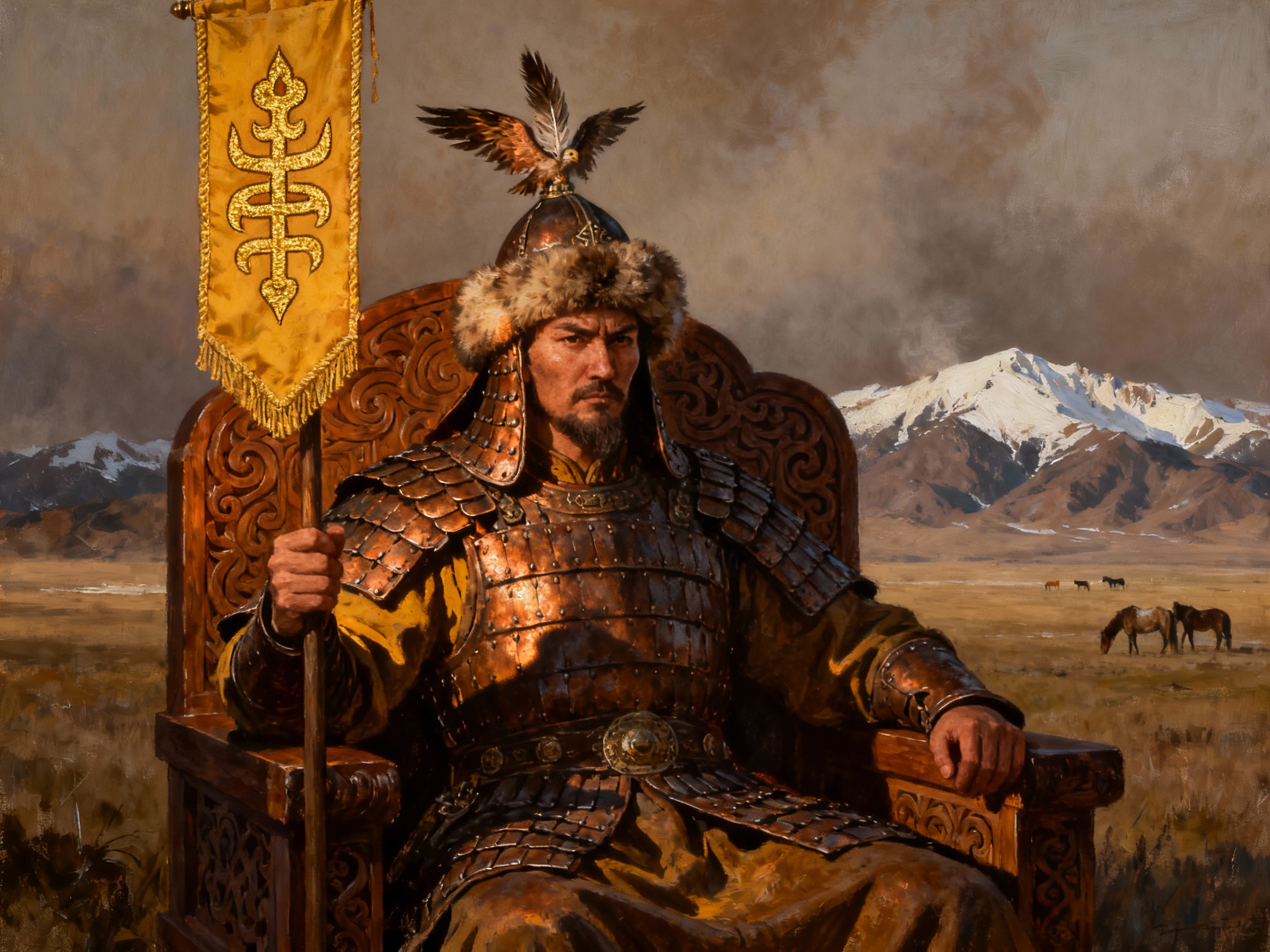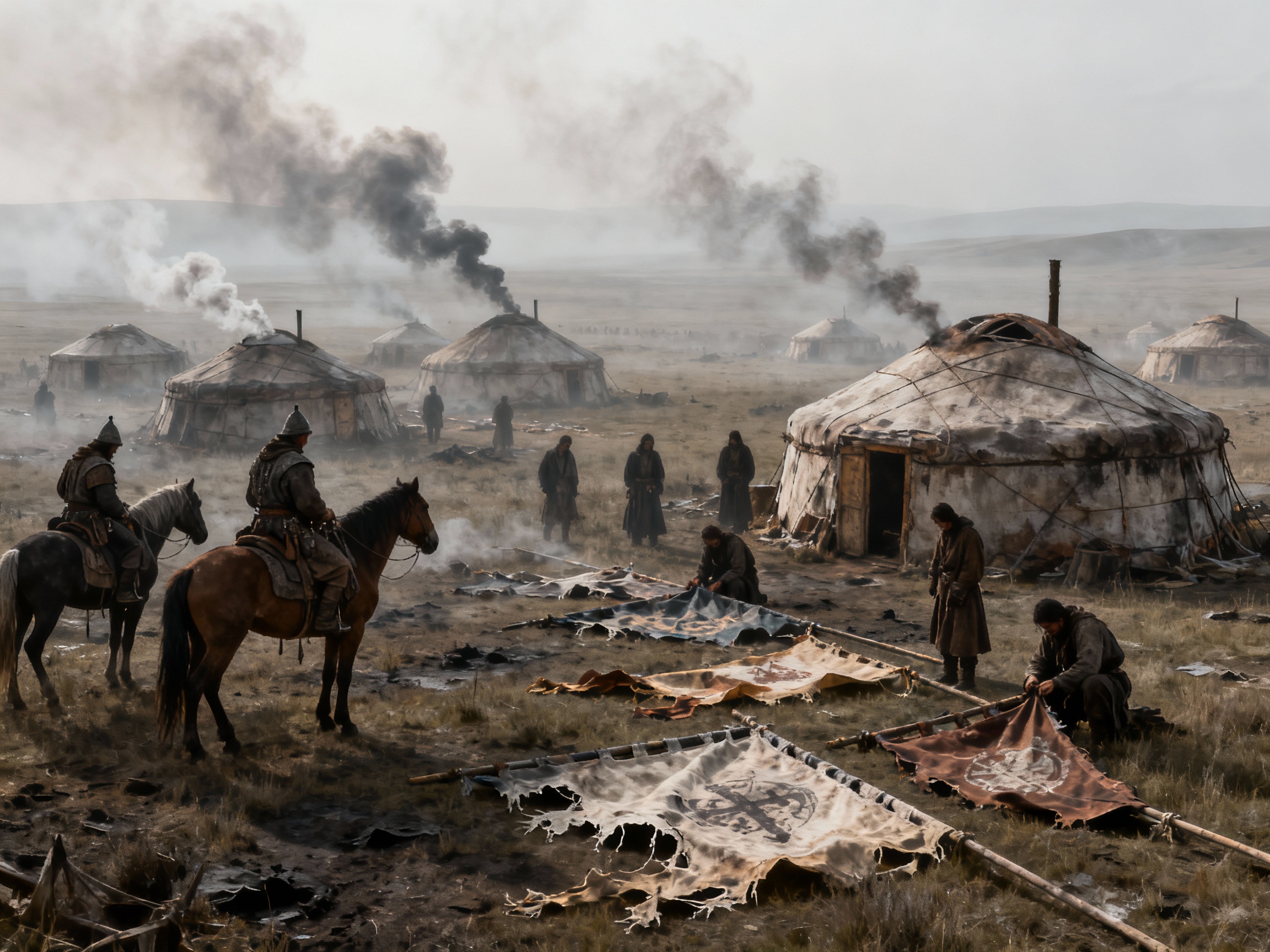
In the history of the Kazakh Khanate of the 16th–17th centuries, one of the key events was the civil war of 1627, which led to the near-total destruction of the Katagan tribe. This tribe of Mongolian origin made up about 40% of the Kazakh population and played a central role in the military and territorial structure of the khanate. Below, I will analyze the events based on available historical sources, such as the testimonies of Kadirali Zhalairi, Abu-l-Ghazi, and Mukhamedzhan Tynyshpaev, focusing on the structure of the khanate, the causes of the conflict, the course of the war, and the long-term consequences. The analysis will help understand how this war influenced the formation of the modern system of zhuzes.
The Structure of the Kazakh Khanate in the Early 17th Century
The Kazakh Khanate during this period was organized on a military-territorial principle inherited from the Mongolian tradition. The total number of warriors was estimated at 50,000, which, at a ratio of 1:4 (one warrior for every four family members), corresponded to approximately 250,000 people. Of these, 20,000 warriors (100,000 people) belonged to the Katagans, and 30,000 (150,000) to tribes under the general name "Alash."
The khanate was divided into two wings:
- Right wing (On-kol): Two "sanas" (tumens) of Katagans, led by the junior khan Tursun. Center - Tashkent. This wing controlled the southern trade routes and fertile lands.
- Left wing (Sol-kol): Three "sanas" of Alash, under the supreme khan Yesim. Center - Turkestan. "San" denoted 10,000 warriors with families, with its own tamga (mark) and battle cry.
Each san was headed by a tumenbasi (temnik) and represented an autonomous military-territorial unit. The Katagans, as the most numerous tribe, provided the main military force of the right wing and were a key element of balance in the khanate.
Causes and Course of the Civil War of 1627
The conflict between Yesim and Tursun arose from a struggle for power. Yesim, relying on the Alash, saw Tursun as a threat to centralization. Tursun, in turn, relied on the Katagans and controlled economically advantageous Tashkent. According to Tynyshpaev, the incident with Abu-l-Ghazi, the Khivan prince, who first found refuge with Yesim in Turkestan and was then handed over to Tursun in Tashkent, served as a trigger. This heightened Yesim's suspicions of disloyalty.
In 1627, Yesim started the war. The Alash (three sanas) supported him, the Katagans (two sanas) - Tursun. The armies clashed in a decisive battle where the Katagans were defeated. Tursun was killed, and Yesim, not satisfied with victory, ordered the extermination of the Katagans as "traitors." According to Abu-l-Ghazi in "Shajara-i Turk va Mogul," Yesim "killed him [Tursun] and slaughtered the Katagans."
The scale of the repressions is explained by several factors:
- The Katagans were already weakened: a significant part went to Kashgaria at the end of the 16th century under the leadership of Sultan Ghazi-sultan, where they assimilated among the Uighurs.
- Fear of revenge: the Katagans made up half of the military force, their survival could provoke a new split.
- Political logic: eliminating the rival's support ensured Yesim's control over Tashkent.
The surviving Katagans dispersed: some merged with Uzbeks, Karakalpaks, and Kyrgyz, others - with Kazakhs as Shanyshkly (Chanyshkly) of the Senior zhuz. According to Shanyshkly legends, a large group fled to Bukhara, and the remaining ones changed their name to "scattered."

Immediate Consequences for the Khanate
The loss of the Katagans led to a sharp decline in military potential: from 50,000 to 30,000 warriors. This had the following effects:
- Weakening of defense: During the war, the khanate was attacked by external enemies - the Kalmyks and Jungars. The Kazakhs could not repel the raids, leading to the loss of territories.
- Demographic crisis: The population decreased by 40%, growth stopped. The Kazakhs did not settle the vacated western steppes after the Nogais left, allowing the Oirats (Kalmyks and Jungars) to penetrate the khanate's rear.
- Geopolitical vulnerability: In the 17th–18th centuries, the Kazakhs were squeezed between the Kalmyk Khanate (200,000) in the west and the Jungar (500,000) in the east, which triggered two centuries of wars and migrations.
The analysis shows that the war not only destroyed the Katagans but also undermined the unity of the khanate. The right wing disappeared, leaving only the left - three sanas of Alash. The term "Alash" became synonymous with "Kazakh," reflecting the dominance of the surviving groups.
The Formation of the Zhuz System: The Role of Tauke Khan
After the war, the khanate evolved into three zhuzes based on the Alash sanas:
- Senior zhuz (Uly zhuz): Southern tribes, center - Tashkent (captured after the Katagans).
- Middle zhuz (Orta zhuz): Central steppes.
- Junior zhuz (Kishi zhuz): Western lands.
Tauke Khan (1680–1718) carried out reorganization to strengthen central power and balance forces:
- Transferred the Kerei and Uak from the Senior zhuz to the Middle, weakening the former (now without Katagans, but with Tashkent).
- In the Junior zhuz, transferred seven clans (Tabyn, Tama, Kerei, Kerderi, Teleu, Ramadan, Zhagalbaily) from the Middle or external groups, uniting them into "Zhetyru" as a counterbalance to Alshyn (the largest tribe of the Junior zhuz after the war).
These movements stabilized the structure: the zhuzes became autonomous, with their own khans and biys. Inter-zhuz conflicts were resolved peacefully, and unifications occurred only in crises (e.g., against the Jungars). The power of the khans weakened, tribal leaders strengthened; within the zhuzes, mini-khanates emerged, like the Bukey Horde of Zhangir in the Junior zhuz.
Analysis of Tauke's reforms: they prevented the repetition of the Katagan scenario but contributed to decentralization. The collapse of the khanate in the 18th century occurred precisely along the zhuz lines, which facilitated external threats but preserved ethnic integrity.
Comparison with Modernity and Lessons
In the 16th–17th centuries, the Katagans outnumbered any other Kazakh tribes (Alshyn, Naiman, Konyrat, etc.) - each of them was less than a third of their strength. Today, the descendants of the Katagans (Shanyshkly) number about 200,000 (1% of 20 million Kazakhs), while the three zhuzes are 15 million.
Lessons from the event:
- Internal conflicts in nomadic societies often lead to greater losses than external wars due to the lack of reserves.
- The balance of power (as with Tauke) is key to stability, but it enhances fragmentation.
- Demographic losses hinder expansion: the Kazakhs did not utilize the vacuum after the Nogais, which increased the Oirat threat.
Sources such as Chokan Valikhanov emphasize the antiquity of the Katagans as a South-Central Asian people, whose destruction became a turning point in the ethnogenesis of the Kazakhs. This event illustrates how a local conflict can restructure an entire social system.

Leave a comment
Comment